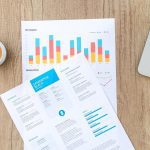According to IDG, 35% of companies with effective data grow faster year-on-year. However, many still take little notice of data quality or ongoing data management, pushing it into deepest corners to eventually be abandoned and forgotten. If this sounds like you, it's time to consider putting data at the top of your business agenda again ¦ Big Data “ a neglected but important … [Read more...] about Moving Data from the Basement to the Boardroom
Big Data
Learn everything you need to know about big data. Find out how companies are using this revolutionary technology and what it means for your business strategy.
How to Find and Eliminate Duplicate Data in Your Database
Duplicate data is a problem that plagues many businesses, but it's relatively easy to spot and prevent ”once you understand its nature, and what to do about it. You also have many potential options to explore when identifying and eliminating duplicate data, so you can find the best methodology for your business and needs. But how do you get started if this is a new problem for … [Read more...] about How to Find and Eliminate Duplicate Data in Your Database
The Link between Good SEO and Big Data
According to latest statistics, at the moment we have around 7 Zettabytes of data on the internet. And that number is increasing as we speak. So, where's all of this data coming from? Simply put, we all create tons of data every day. For instance, we upload 576,000 hours' worth of video on YouTube every day; Facebook has around 1.3 billion active users daily, who post pictures … [Read more...] about The Link between Good SEO and Big Data
The State of Digital Advertising and Trends that Shape its Future
A decade ago, digital advertising was nothing more than a banner ad placed on a website. Today, the internet is accessible everywhere we go, on our tablets and mobile phones. This has spurred tremendous growth in digital advertising. Digital spending is now the single largest US advertising. Facebook and Google control much of this spend. Facebook's ad revenue is projected to … [Read more...] about The State of Digital Advertising and Trends that Shape its Future
How to Structure a Data Science Team: Key Models and Roles to Consider
If you've been following the direction of expert opinion in data science and predictive analytics, you've likely come across the resolute recommendation to embark on machine learning. As James Hodson in Harvard Business Review recommends, the smartest move is to reach for the low hanging fruit and then scale for expertise in heavier operations. Just recently we talked … [Read more...] about How to Structure a Data Science Team: Key Models and Roles to Consider
What is big data?
Big data is a term that refers to the massive amount of digital data created and shared every day. Big data can transform how we live, work, and communicate. It can be used to improve everything from public health and urban planning to business and marketing.
Big data is also changing the way we think about privacy and security. The volume, velocity, and variety of big data present challenges and opportunities for organizations and individuals. Regardless, big data is here to stay, and its impact will only continue to grow in the years to come.
What is big data analytics?
Big data analytics is the process of turning large, complex data sets into actionable insights. Businesses use various analytical tools and techniques, including machine learning and statistical analysis, to do this.
Big data analytics can be used to improve decision-making in areas like marketing, operations, and customer service. It can also be used to identify new business opportunities and optimize existing processes. With the help of big data analysis, businesses can gain a competitive edge by using their data better.
Want to learn more about big data? Datafloq has courses available. Contact us to get started.
When was big data introduced?
The term big data was coined in the 1990s, with some giving credit to John Mashey for popularizing the term. However, the concept of big data has been around for much longer.
Where does big data come from?
In the early days of computing, scientists and businesses began to realize that the amount of data being generated was increasing exponentially. As a result, they began to develop new methods for storing and processing data.
Over time, these methods have become increasingly sophisticated and have played a key role in enabling businesses to make sense of vast amounts of information. Today, big data is used in various industries, from retail to healthcare, and its importance is only likely to grow in the years to come.
What are examples of big data?
One of the most common examples of big data is social media data. With over 2 billion active users, Facebook generates a huge amount of data every day. This includes information on user interactions, posts, and even location data. Analyzing this data can help companies better understand their customers and target their marketing efforts.
Another example of big data is GPS signals. These signals are constantly being generated by devices like cell phones and fitness trackers. When combined with other data sets, GPS signals can be used to provide insights into everything from traffic patterns to human behavior. Finally, weather patterns are another type of big data set. By tracking these patterns over time, scientists can better understand the impact of climate change and develop strategies for mitigating its effects.
How do companies use big data?
Companies use big data in marketing, product development, and customer service. By analyzing large data sets, businesses can identify patterns and trends that would be otherwise difficult to spot. For example, a company might use big data to track customer behavior patterns to improve its marketing efforts.
Alternatively, a company might use big data to improve its products by identifying areas where customers are most likely to experience problems. For instance, big data can be used to improve customer service by finding pain points in the customer journey. Ultimately, big data provides companies with a valuable tool for gaining insights into their business operations.






